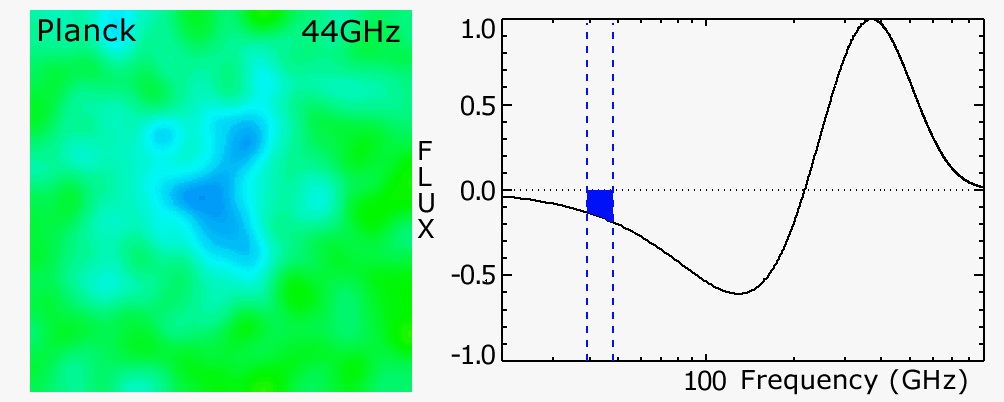There's been many bloggers writing about the first Planck results presented here at AAS and in Europe but I would like to write a little more than has been written on the Sunyeav-Zeldovich results as I think they are impressive. Impressive both in terms of the science we get as well as well as this particular example shows how precise CMB experiments have become. I will focus on the results from this paper.
Okay, what is this effect anyways? The Sunyaev–Zel'dovich effect: "is the result of high energy electrons distorting the cosmic microwave background radiation (CMB) through inverse Compton scattering, in which the low energy CMB photons receive an energy boost during collision with the high energy cluster electrons." And the thing is, clusters of galaxies are filled with high energy electrons in what is known as the intra-cluster medium (ICM).
This means that we can use specific distortions in the CMB to both locate clusters of galaxies and infer science from them from estimating the Hubble constant to extracting information on the physics driving galaxy and structure formation.
Look at the image above: it shows the precision at which Planck can observe this "SZ" effect. (And it is just amazing!) In this image you should note several things. First, Planck intentionally is observing the sky at many frequency bands to see this stuff. (And watch the frequency change with tie in the image.) At the lowest frequencies the boost on CMB photons yields a diminished flux, at higher frequencies it is an enhanced flux, and right at 217 GHz there is should be flux.
 And if you look closely at the image up top you can see that Planck is seeing this! The cluster in the center has diminished flux at low frequencies, denoted by the blue smudge, no flux at 217 GHz and enhanced flux for high frequencies. (Now the smudge turns red.) So Planck can see this effect really well and the science going into this effect can be studied in detail.
And if you look closely at the image up top you can see that Planck is seeing this! The cluster in the center has diminished flux at low frequencies, denoted by the blue smudge, no flux at 217 GHz and enhanced flux for high frequencies. (Now the smudge turns red.) So Planck can see this effect really well and the science going into this effect can be studied in detail.
The next two plots to the right show how the mass and luminosity of these clusters relate to redshift. Redshift again being a measure of how far away these objects are from us. These relations can now be compared to physical models and tell us a lot of science about the universe. Again, what is so great is Planck is seeing a lot of clusters and is able to see how the physical properties of these clusters relate with redshift. (Or as time progressed throughout the universe.)
Now, this stuff is all interesting but the really cool stuff, the main stuff Planck was built for, won't be released until next year. That should be a good day for cosmology and I for one am very excited! Cosmology has become a very precise science indeed!
Come in B-modes.... Come on! :)
The Planck Collaboration. (2011). Planck Early Results: The all-sky Early Sunyaev-Zeldovich cluster sample Submitted to A&A. arXiv: 1101.2024v1

No comments:
Post a Comment
To add a link to text:
<a href="URL">Text</a>